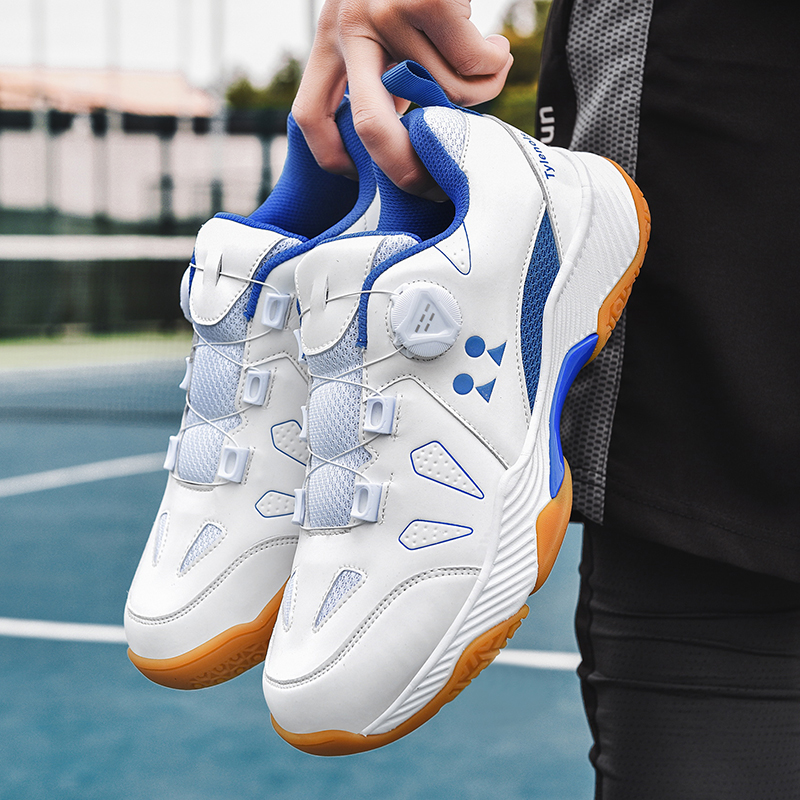
Cushioning is a critical factor to consider when selecting pickleball shoes. The repetitive impact forces experienced during pickleball matches can take a toll on the feet, joints, and overall comfort of players. Proper cushioning helps absorb shock, reduce fatigue, prevent injuries, and enhance overall performance on the court. This essay will delve into the role of cushioning in pickleball shoes, discussing its importance, types of cushioning technologies, factors to consider, and the benefits it provides to players.
I. Importance of Cushioning in Pickleball Shoes: The high-intensity nature of pickleball requires players to make quick movements, including jumps, pivots, and lateral shifts. These actions generate significant impact forces that can lead to discomfort, fatigue, and potential injury. Cushioning in pickleball shoes plays a crucial role in absorbing and dispersing these forces, protecting the feet, ankles, knees, and joints from excessive stress. It allows players to move freely, comfortably, and confidently on the court, ultimately enhancing performance and preventing long-term damage.
II. Types of Cushioning Technologies: Various cushioning technologies are employed by manufacturers to provide optimal shock absorption and comfort in pickleball shoes. Some notable technologies include:
- Gel Cushioning: Gel cushioning systems use silicone gel or similar materials placed in specific areas of the midsole. These gels absorb and disperse impact forces, providing excellent shock absorption and cushioning.
- Foam Cushioning: Foam materials, such as EVA (ethylene-vinyl acetate), are commonly used in pickleball shoe midsoles. They offer lightweight cushioning, responsiveness, and energy return. Different foam densities and configurations can provide varying levels of cushioning and support.
- Air Cushioning: Air cushioning systems utilize pockets or chambers filled with compressed air within the midsole. These pockets compress and release upon impact, providing responsive cushioning and shock absorption. Air cushioning is often customizable, allowing players to adjust the level of cushioning to their preference.
- Energy Return Technologies: Some cushioning technologies, such as Adidas Boost or Nike Zoom Air, focus on energy return. These technologies aim to absorb impact forces and convert them into energy, propelling the player forward and enhancing performance.
III. Factors to Consider: When evaluating the cushioning in pickleball shoes, players should consider a few important factors:
- Impact Protection: The primary function of cushioning is to protect against impact forces, so it’s crucial to choose shoes that offer sufficient shock absorption. Look for shoes with adequate cushioning in the midsole, especially in the heel and forefoot areas, as these are the primary impact zones during pickleball movements.
- Responsiveness: While cushioning should absorb impact, it should also provide responsiveness for quick and explosive movements. Shoes that strike a balance between cushioning and responsiveness can enhance agility, speed, and overall performance.
- Weight: Cushioning adds weight to the shoe, which can potentially affect maneuverability. Consider the trade-off between cushioning and weight, finding a balance that suits your playing style and preferences.
- Durability: The durability of cushioning materials is another crucial factor. Ideally, choose shoes with cushioning technologies that retain their performance and structure over the course of multiple matches and training sessions.
IV. Benefits of Proper Cushioning in Pickleball Shoes: Proper cushioning in pickleball shoes offers a range of benefits to players:
- Shock Absorption: Cushioning materials absorb and disperse impact forces, reducing stress on the feet, ankles, and joints. This helps prevent fatigue and discomfort during matches and minimizes the risk of injury.
- Comfort: Adequate cushioning enhances overall comfort by providing a plush and supportive feel. This allows players to focus on their game without distractions from foot pain or discomfort.
- Injury Prevention: Proper cushioning helps minimize the risk of common pickleball injuries such as plantar fasciitis, shin splints, and stress fractures. It provides an extra layer of protection against repetitive impact forces that can lead to chronic injuries over time.
- Enhanced Performance: Cushioning that offers both shock absorption and responsiveness allows players to move more efficiently, with reduced energy expenditure. This translates into improved agility, quicker recovery between movements, and enhanced performance on the court.
V. Maintenance and Replacement: To ensure continued performance, it is important to properly maintain and replace pickleball shoes when necessary. Over time, cushioning materials may lose their ability to provide adequate shock absorption and comfort. It is recommended to replace pickleball shoes every 6-12 months, depending on usage and wear. Regularly inspect the condition of the cushioning and consider replacing shoes if they show signs of degradation or flattening.
Conclusion: Cushioning plays a vital role in pickleball shoes, providing shock absorption, comfort, and injury prevention to players.